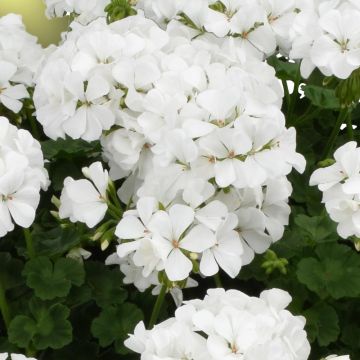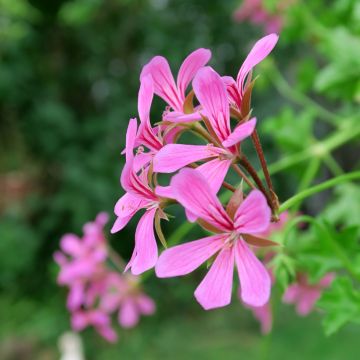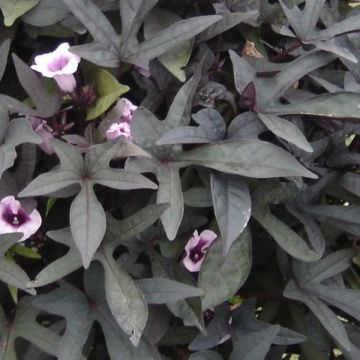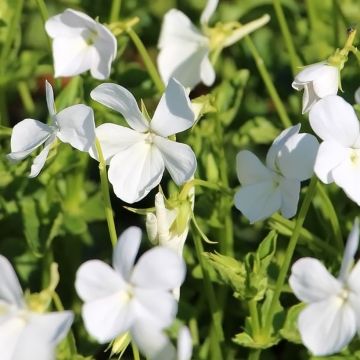

5 double ivy-leaf geraniums
5 double ivy-leaf geraniums
Pelargonium peltatum Amelit, Blanche Roche, Double Ruby, Double Tommy, Double Rocky
Pelargonium peltatum
very beautiful promising plants
philippe, 23/03/2024
This item cannot be shipped to the selected country
Delivery charge from €5.90
Delivery to Corse prohibited
More information
Schedule delivery date,
and select date in basket
This plant carries a 6 months recovery warranty
More information
We guarantee the quality of our plants for a full growing cycle, and will replace at our expense any plant that fails to recover under normal climatic and planting conditions.
From €5.90 for pickup delivery and €6.90 for home delivery
Express home delivery from €8.90.
Delivery to Corse prohibited: UE law prohibits the import of this plant from mainland France to Corse as part of the fight against Xylella fastidiosa. Please accept our sincere apologies.
More information

Does this plant fit my garden?
Set up your Plantfit profile →
Collection items (5 plants)
Description
Here is a collection of 5 vine-plant geraniums with double flowers, in various colours ranging from mauve to pure white, dark red, wine red and intense fuchsia pink. Their well-branched growth habit lends itself to a more or less trailing habit, ideal for decorating flower boxes, hanging baskets and containers on the terrace or balcony. They also thrive in sunny borders where they add a touch of exoticism and remarkable colour. Create sumptuous floral displays from June to October!
This collection is composed of:
1 x Pelargonium Amelit: with semi-double flowers, dark mauve or amethyst violet. Forms a tussock with a round and trailing habit, reaching a height of 35 cm (14in) and a width of 50 to 60 cm (20 to 24in). Bright and shiny green foliage.
1 x Pelargonium Blanche Roche: with pure white double flowers. Forms a round and trailing tussock, reaching a height of 20 cm (8in). An old variety, resistant to bad weather.
1 x Pelargonium Double Ruby: with large clusters of small semi-double flowers, in a beautiful dark red colour. Forms a tussock, reaching a height of 50 cm (20in) and a diameter of 50 to 60 cm (20 to 24in), with a semi-trailing habit.
1 x Geranium Double Tommy: an opulent plant, forming a round and trailing tussock, reaching a height of 60 to 80 cm (24 to 32in), producing clusters of small semi-double flowers in a rare colour, intermediate between burgundy and wine red, with violet reflections.
1 x Geranium Double Rocky: early flowering, with large heads of intense fuchsia pink semi-double flowers on a plant forming a round and trailing tussock, reaching a height of 30 cm (12in) and a width of 40 cm (16in). Resistant to bad weather.
Ivy geraniums are derived, among others, from the Pelargonium peltatum, a plant from the geranium family native to the coast of the Cape Province in South Africa. This species forms creeping or spreading stems, whose foliage resembles that of ivy. The hybrids we know as ivy geraniums exhibit the same semi-trailing habit and increased floribundity. Very easy to grow in the sun, they are not chosen by professional gardeners and beginners by chance: they are generous and undemanding plants, ideal for decorating pots or low borders in front of the house for most of the year. They cascade from flower boxes and balconies, their flowers create round and colourful masses that blend together or enhance other plants, whether they are trailing like purple or chocolate-leaved ipomoeas (Ipomoea 'Illusion Midnight Lace', Ipomoea 'Sweet Heart Purple') or upright like zonal geraniums, petunias, gauras or fuchsias.
Note: Please note that our young plug plants are professional products reserved for experienced gardeners; upon receipt, transplant and store them in a sheltered place (veranda, greenhouse, cold frame) at a temperature above 14°C (57.2°F) for a few weeks before planting them outdoors once the risk of frost has gone.
Report an error about the product description
Flowering
Foliage
Plant habit
Botanical data
Pelargonium
peltatum
Amelit, Blanche Roche, Double Ruby, Double Tommy, Double Rocky
Geraniaceae
Pelargonium peltatum
Cultivar or hybrid
Other Pelargonium - Geranium
Planting and care
Planting period
Intended location
Care
-
, onOrder confirmed
Reply from on Promesse de fleurs
Plug plants - Annuals
Haven't found what you were looking for?
Hardiness is the lowest winter temperature a plant can endure without suffering serious damage or even dying. However, hardiness is affected by location (a sheltered area, such as a patio), protection (winter cover) and soil type (hardiness is improved by well-drained soil).

Photo Sharing Terms & Conditions
In order to encourage gardeners to interact and share their experiences, Promesse de fleurs offers various media enabling content to be uploaded onto its Site - in particular via the ‘Photo sharing’ module.
The User agrees to refrain from:
- Posting any content that is illegal, prejudicial, insulting, racist, inciteful to hatred, revisionist, contrary to public decency, that infringes on privacy or on the privacy rights of third parties, in particular the publicity rights of persons and goods, intellectual property rights, or the right to privacy.
- Submitting content on behalf of a third party;
- Impersonate the identity of a third party and/or publish any personal information about a third party;
In general, the User undertakes to refrain from any unethical behaviour.
All Content (in particular text, comments, files, images, photos, videos, creative works, etc.), which may be subject to property or intellectual property rights, image or other private rights, shall remain the property of the User, subject to the limited rights granted by the terms of the licence granted by Promesse de fleurs as stated below. Users are at liberty to publish or not to publish such Content on the Site, notably via the ‘Photo Sharing’ facility, and accept that this Content shall be made public and freely accessible, notably on the Internet.
Users further acknowledge, undertake to have ,and guarantee that they hold all necessary rights and permissions to publish such material on the Site, in particular with regard to the legislation in force pertaining to any privacy, property, intellectual property, image, or contractual rights, or rights of any other nature. By publishing such Content on the Site, Users acknowledge accepting full liability as publishers of the Content within the meaning of the law, and grant Promesse de fleurs, free of charge, an inclusive, worldwide licence for the said Content for the entire duration of its publication, including all reproduction, representation, up/downloading, displaying, performing, transmission, and storage rights.
Users also grant permission for their name to be linked to the Content and accept that this link may not always be made available.
By engaging in posting material, Users consent to their Content becoming automatically accessible on the Internet, in particular on other sites and/or blogs and/or web pages of the Promesse de fleurs site, including in particular social pages and the Promesse de fleurs catalogue.
Users may secure the removal of entrusted content free of charge by issuing a simple request via our contact form.
The flowering period indicated on our website applies to countries and regions located in USDA zone 8 (France, the United Kingdom, Ireland, the Netherlands, etc.)
It will vary according to where you live:
- In zones 9 to 10 (Italy, Spain, Greece, etc.), flowering will occur about 2 to 4 weeks earlier.
- In zones 6 to 7 (Germany, Poland, Slovenia, and lower mountainous regions), flowering will be delayed by 2 to 3 weeks.
- In zone 5 (Central Europe, Scandinavia), blooming will be delayed by 3 to 5 weeks.
In temperate climates, pruning of spring-flowering shrubs (forsythia, spireas, etc.) should be done just after flowering.
Pruning of summer-flowering shrubs (Indian Lilac, Perovskia, etc.) can be done in winter or spring.
In cold regions as well as with frost-sensitive plants, avoid pruning too early when severe frosts may still occur.
The planting period indicated on our website applies to countries and regions located in USDA zone 8 (France, United Kingdom, Ireland, Netherlands).
It will vary according to where you live:
- In Mediterranean zones (Marseille, Madrid, Milan, etc.), autumn and winter are the best planting periods.
- In continental zones (Strasbourg, Munich, Vienna, etc.), delay planting by 2 to 3 weeks in spring and bring it forward by 2 to 4 weeks in autumn.
- In mountainous regions (the Alps, Pyrenees, Carpathians, etc.), it is best to plant in late spring (May-June) or late summer (August-September).
The harvesting period indicated on our website applies to countries and regions in USDA zone 8 (France, England, Ireland, the Netherlands).
In colder areas (Scandinavia, Poland, Austria...) fruit and vegetable harvests are likely to be delayed by 3-4 weeks.
In warmer areas (Italy, Spain, Greece, etc.), harvesting will probably take place earlier, depending on weather conditions.
The sowing periods indicated on our website apply to countries and regions within USDA Zone 8 (France, UK, Ireland, Netherlands).
In colder areas (Scandinavia, Poland, Austria...), delay any outdoor sowing by 3-4 weeks, or sow under glass.
In warmer climes (Italy, Spain, Greece, etc.), bring outdoor sowing forward by a few weeks.





























































